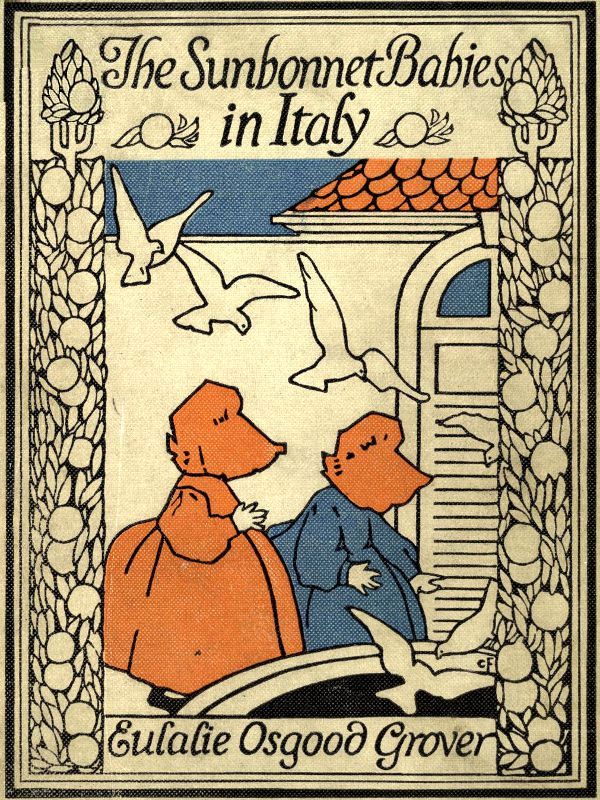
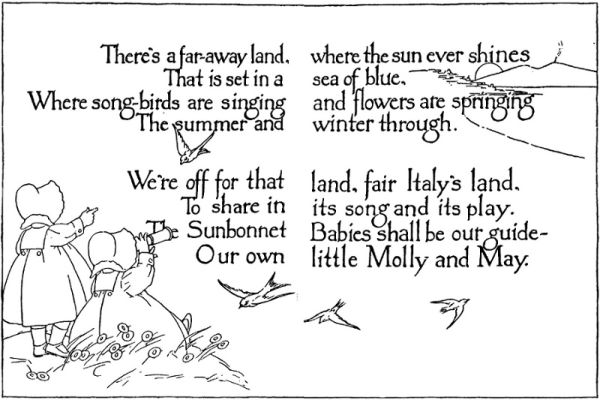
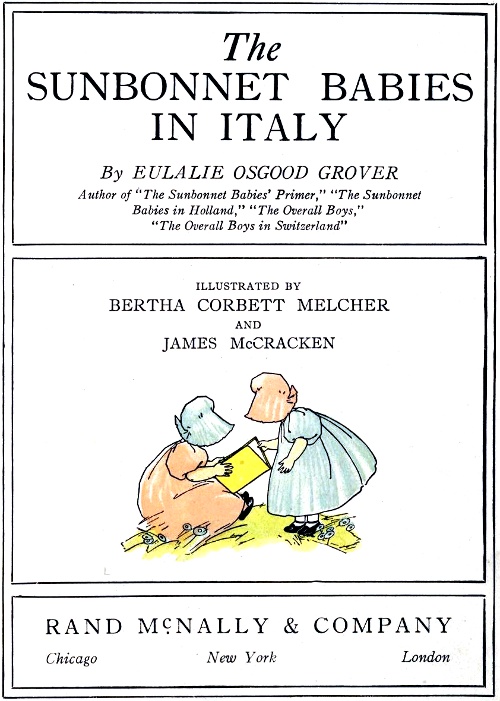
Copyright, 1922, by
Eulalie Osgood Grover
All rights reserved in all countries
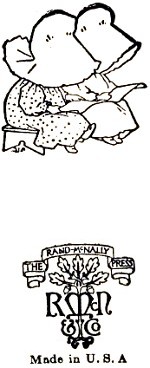
History

‘Sunbonnet Babies were created by Bertha Corbett Melcher (1872–1950).[4] Melcher was born in Denver and moved with her family to Minneapolis in the 1880s. Melcher attended art school in Minneapolis with plans to become a commercial artist.[5] She may have also studied with Howard Pyle.[6] By the 1920s, Melcher had moved to Topanga, California.[7][4]
“Melcher started drawing the Sunbonnet Babies in 1897. The origin of the signature style of the faces being covered by sunbonnets is contested by different members of Melcher’s family and by Melcher herself. In an interview, Melcher’s brother said their mother suggested Bertha avoid the difficulty of drawing faces by covering them with sunbonnets.[4] Melcher herself said that covering faces allowed her to communicate with body position.[4] Melcher has also said that the design came about in “answer to a friend’s challenge to convey emotion without a face.”[2]
“Melcher published her first book, The Sun-Bonnet Babies in 1900.[3] Later, she shopped her illustrations to publisher Rand McNally of Chicago, and nine subsequent books were written by Eulalie Osgood Grover and illustrated by Bertha Corbett. In 1905, Melcher wrote The Overall Boys.[3] Many of these books were used as primers and used widely in primary schools in the midwest.
“Melcher used the sunbonnet babies in advertising and later established the Sunbonnet Babies Company. She started a studio to illustrate and create merchandise of the Sunbonnet Babies.[2] The characters also appeared in a comic strip.[2]
Quilting
“Melcher herself did not originate the use of the sunbonnet babies as quilting pattern. The Sunbonnet Babies quilting pattern appeared in textile art 1910’s in the Ladies Home Journal 1911–1912 in a quilt stitched by Marie Webster. The pattern was popular during the Great Depression. In the American South, it was often known as “Dutch Doll” until the 1970s.[3] There was also a quilt pattern based on the “Overall Boys,” known by the various names including “Overall Bill, “Overall Andy,” “Sunbonnet Sam,” “Suspender Sam,” “Fisherman Jim.”[3] Many patterns for quilts and sewing were designed by Ruby Short McKim and published in nationally syndicated newspapers.[8]
“Sunbonnet Sue became symbolic of ‘female innocence and docility’.[9] Linda Pershing collected accounts from women quilters who depicted ‘Sues’ doing activities such as smoking, wearing more revealing clothing, and subverting feminine stereotypes.[10] In 1979, the “Seamsters Union Local #500,” a group of quilters from Lawrence, Kansas, created “The Sun Sets on Sunbonnet Sue,” a quilt depicting the character murdered in a variety of ways.[3]” Wikipedia
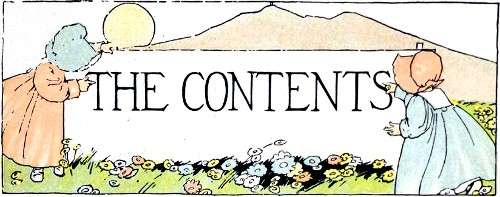

The Arrival at Naples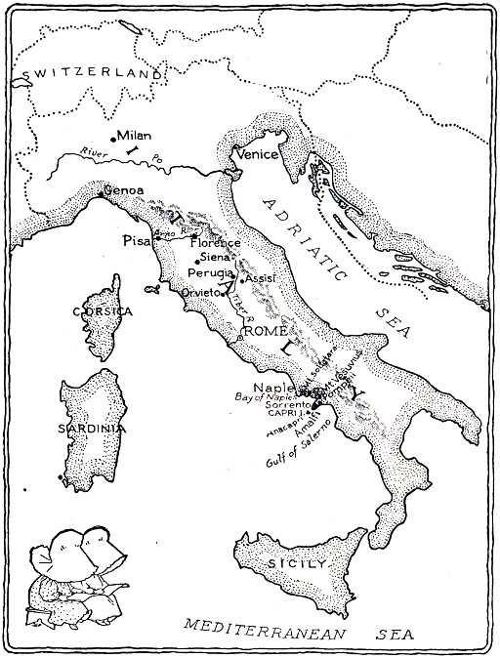
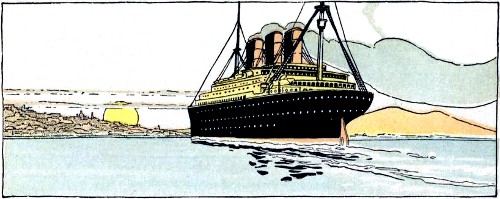
THE ARRIVAL AT NAPLES
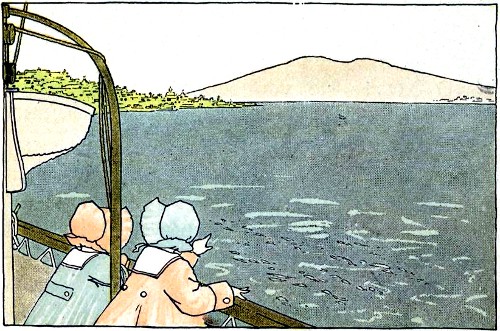
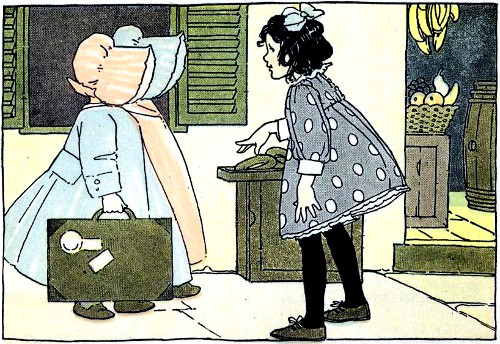
“They knew she liked them because she smiled so sweetly
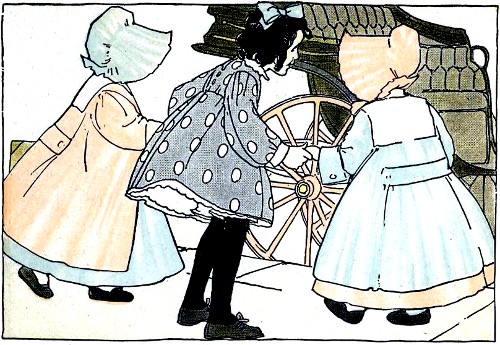
“She took Molly and May each by the hand
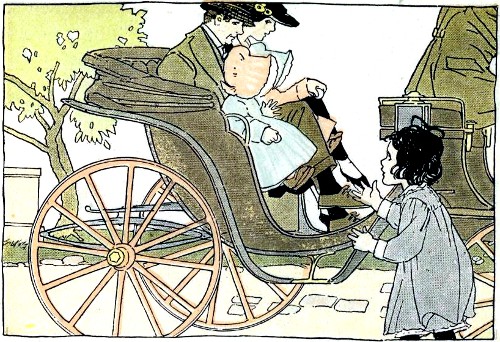
“They each took a big brown penny out of their bags
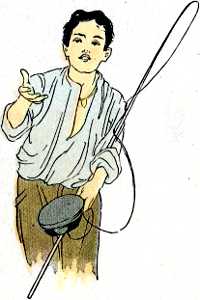
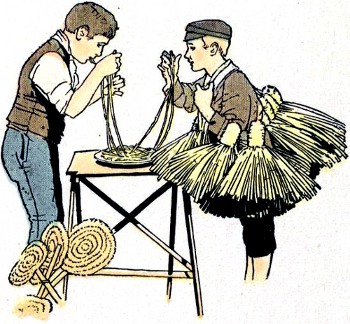
The First Drive
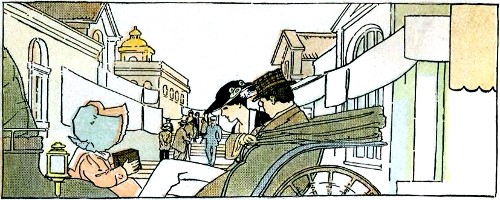
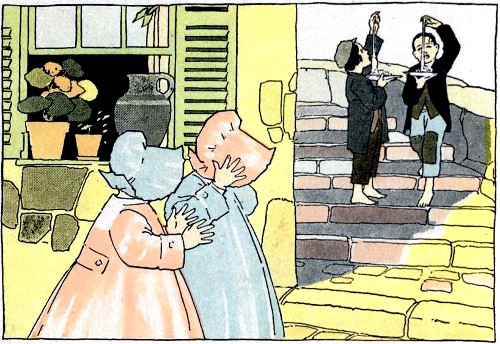
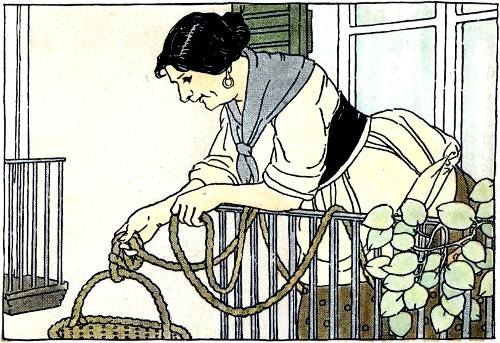
One woman stood on an iron balcony, lowered a basket by a long rope
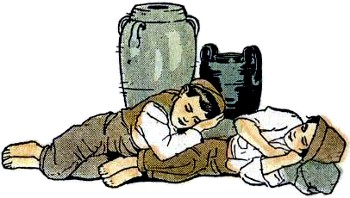
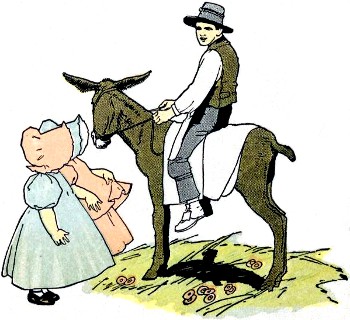
Seeing Strange Sights
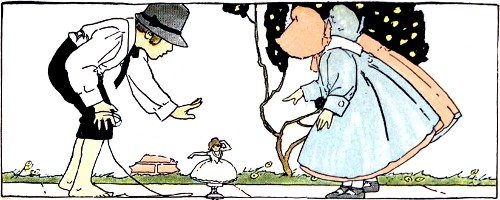
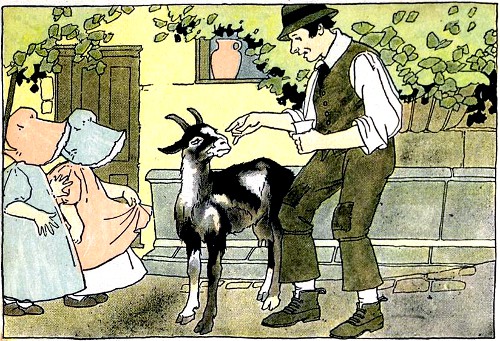
“Oh, what a queer milk cart!” laughed Molly
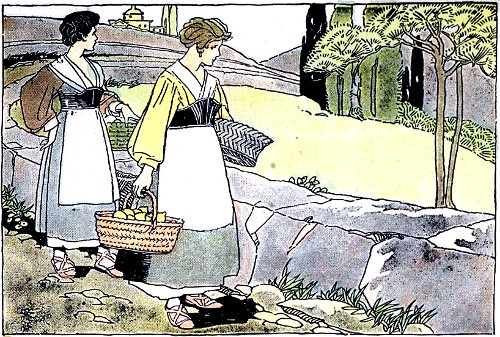
The carriage passed a number of country people carrying baskets
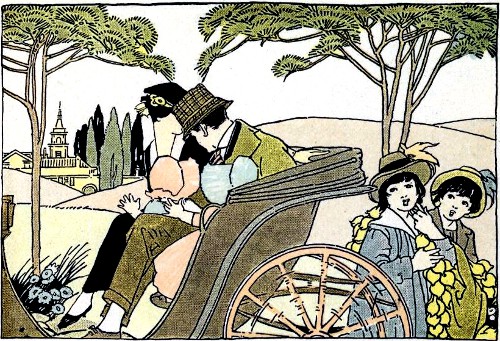
Two small boys carried strings of onions over their shoulders
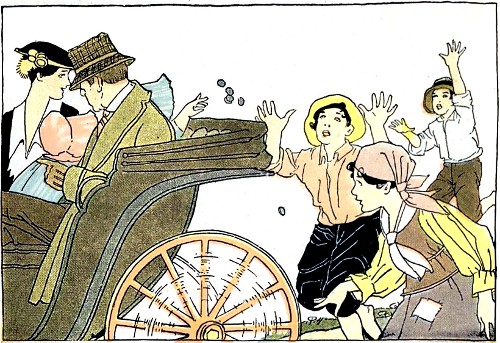
Molly and May opened their bags and began throwing pennies
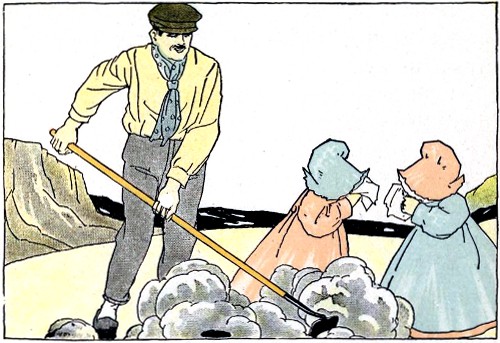
“Oh! oh!” cried May. “Is the world going to burn up?”
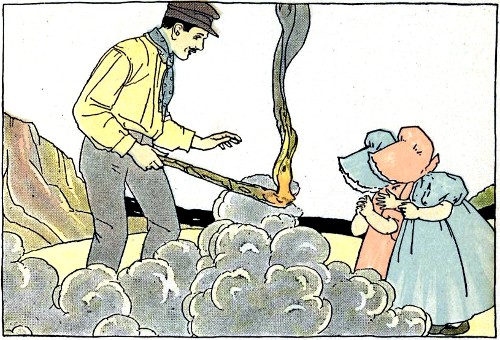
A cloud of black smoke rose from the boiling sand
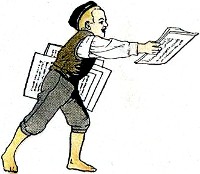
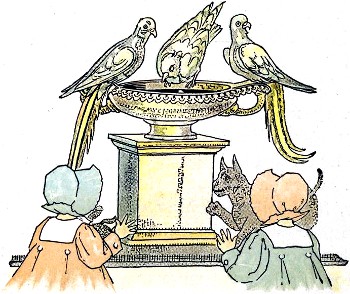
A Visit to the Museum
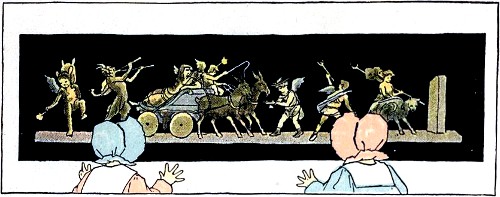
A VISIT TO THE MUSEUM
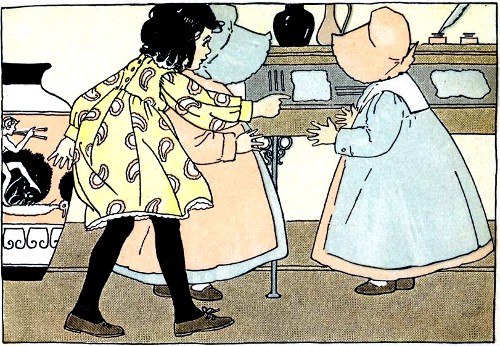
The children were interested in some slates and slate pencils
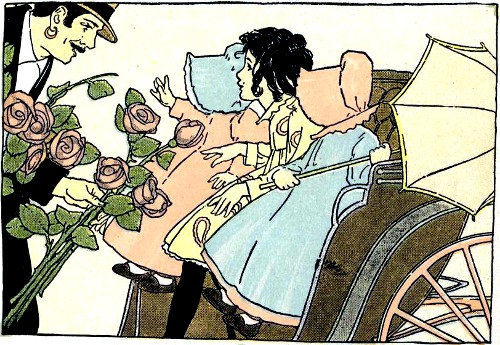
“Oh! oh! oh! May we have them?” they cried all together
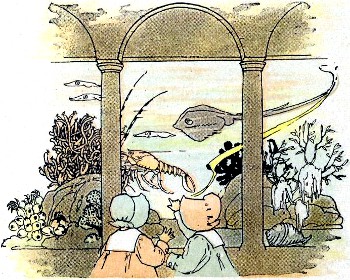
An Afternoon in the Park
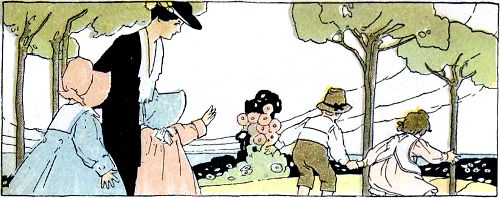
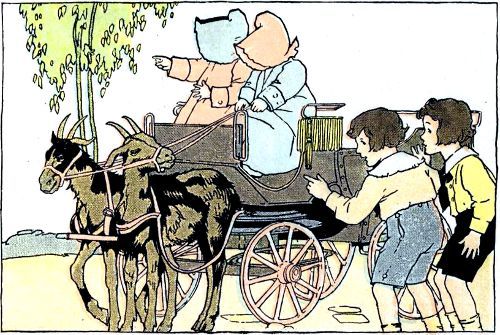
May shook the reins and away they went
I should much rather be a little girl and have a ride in that goat cart. Those Italian children have just had a ride. 55See, they are each paying the man a penny. O sir! Please may we ride next?”
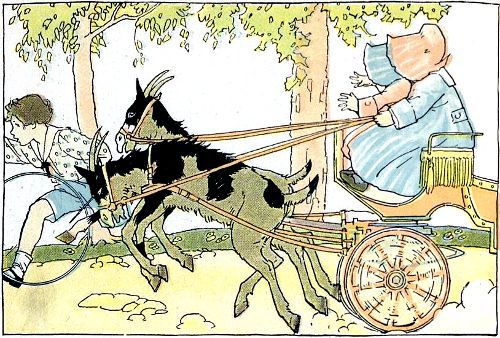
“And please may I drive the goats?” asked May. “I know how to drive my pony.”
In another moment Molly and May were climbing into the small cart. May then shook the reins and away they went, with the man following close behind them.
They passed groups of jolly boys and girls playing marbles, spinning tops, or rolling hoops. They were clean, well-dressed children, not 56ragged and poor like so many children Molly and May had seen in other parts of the city.
Smiling nurse maids pushed dear little babies about in handsome carriages, or sat on shaded benches watching the little children at their play.
Everyone was interested in the small goat cart with its happy passengers.
Suddenly a little boy who was rolling a hoop began to race with the goats. He ran along beside them, driving his hoop as fast as 57he could make it go. The goats did not want to be left behind, so they trotted faster and still faster, but the little boy with his rolling hoop kept up with them.
The Sunbonnet Babies began to be a bit frightened, they were riding so very fast. May pulled on the reins and cried, “Whoa! whoa! stop! stop!” The small Italian goats did not understand English, so they ran faster than ever. They were enjoying the race, and so was the man who owned them. But when he saw that his little passengers were afraid, he sprang forward to stop his team. Just at that moment the goats turned sharply about, and over went the cart, Sunbonnet Babies and all.
Everybody was then really frightened, though only for a moment. Molly and May were on their feet in a jiffy. The boys and girls all laughed and talked at the same time, and the man scolded his goats for their naughty trick.
“Please don’t scold the goats,” said the little boy with the hoop. “You ought to praise them. They knew if you stopped them they would lose the race, so they tried to turn around and go in 58the other direction. Then the cart tipped over and spoiled the fun.”
“It was fun, wasn’t it?” exclaimed Molly. “But let’s not do it over again. Let’s have a tea party now.”
“Oh, yes! Let’s have a tea party!” cried May. “Here is a lovely place for it in front of this pretty tea house. Who wants some grape juice and some little cakes?”
“Oh, I do!” “And I do!” cried two happy voices in real American English, for the little boy with the hoop was an American, just like the Sunbonnet Babies. And so they had the jolliest tea party under the big trees in the park that three little American children ever had together, which is saying a very great deal.
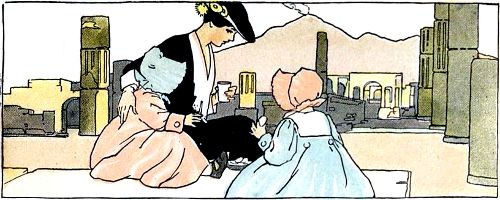
THE BURIED CITY
“Goody! This is the day we are going to Pompeii! …
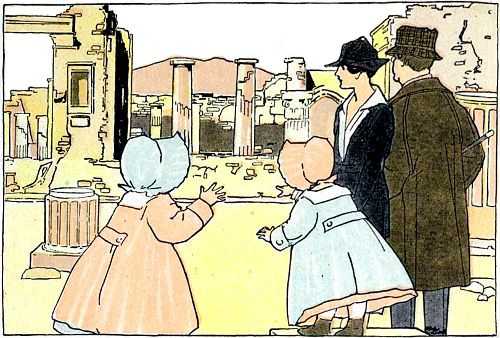
Molly and May felt as if they were in another world
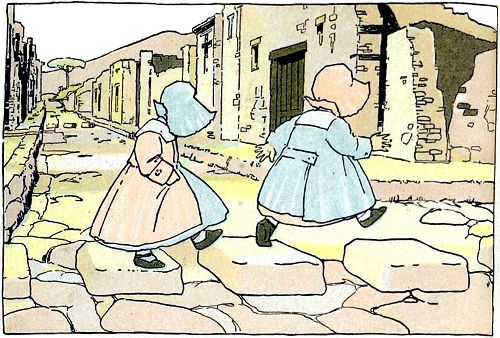
It was great fun to jump across the streets on the high stepping-stones
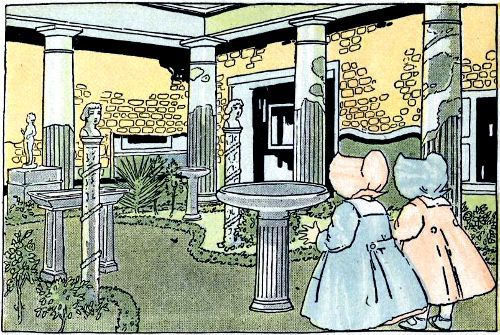
The rooms all opened upon a lovely little garden and court

Molly lifted up a little lizard very gently by its long pointed tail
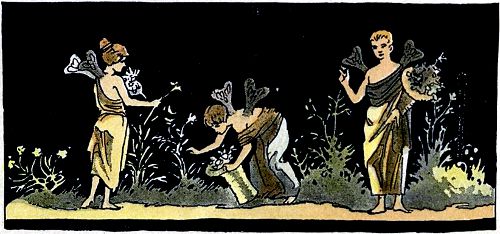
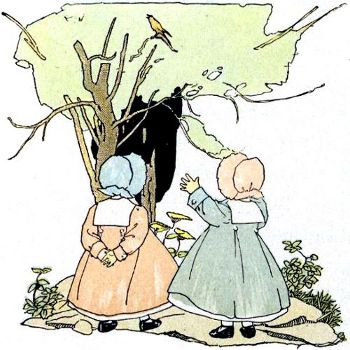
A Long Drive 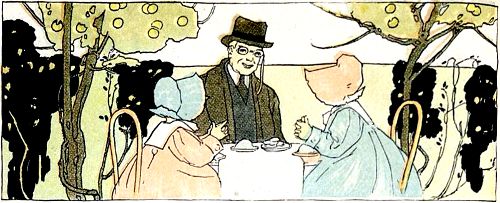
Discover more from Jacki Kellum
Subscribe to get the latest posts sent to your email.